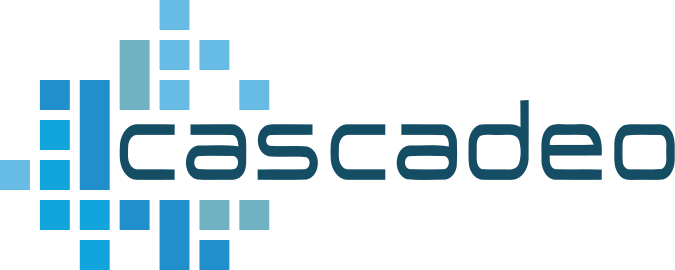
Women inventors created some of the most important tech in history, building foundations for the way we live, work, and create today.
Celebrating Women’s History in Tech
Each week this March, we celebrated the contributions of women inventors to the tech landscape, with four inventions that changed all our lives.
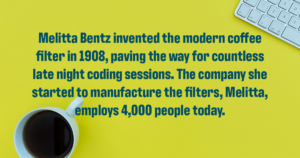
1. The Coffee Filter and Modern Coffee Brewing Process
In the early 20th century, German entrepreneur Melitta Bentz grew frustrated with the messy brewing of her era’s espresso makers and over-brew of percolators, so she invented the coffee filter used in the drip brewing process, and by extension, the drip and pour-over process itself. She patented the filter in 1908.
The company Bentz created to produce the filters is still in business and still making filters, coffee makers, and coffee today, employing more than 4,000 employees worldwide, with annual revenue of $1.8 billion.
2. The Rocket Fuel that Propelled the First U.S. Satellite into Space
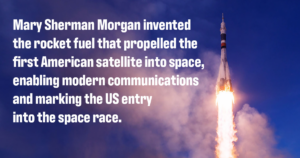
On February 1, 1958, Explorer 1, America’s first satellite, launched into space on the Jupiter rocked, propelled by Hydyne, a fuel created by chemist Mary Sherman Morgan. The launch marked the US entry into the space race.
Before her focus on rocket fuel, Ms. Morgan left university to work on improving explosives for use in WWII. After the war, she became the only woman, and the only person without a college degree, on the Jupiter project’s team of 900 engineers.
Morgan’s work was largely unknown to the public because most of it was classified during her lifetime. She died in 2004.
3. The Protocol that Paved the Way for the Modern Internet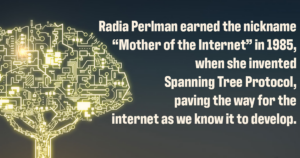
Radia Perlman earned the nickname “Mother of the Internet” in 1985, when she invented STP: Spanning Tree Protocol, the protocol that allows networks to exchange data without getting stuck in a loop, a foundation of data exchange that paved the way for the internet as we know it to emerge.
In the early 1970s, when she was a student at MIT, Perlman invented a programming language for children, allowing toddlers as young as three to program an educational robot called a Turtle, a pioneering invitation for children to begin learning to code at early ages.
Perlman wasn’t the only pioneer in her family—her mother was a computer programmer long before women were commonly welcomed in the field. Perlman has continued innovating, creating several other important protocols, holding more than 80 patents, and earning multiple top-level tech awards worldwide.
4. The First English-Based Programming Language
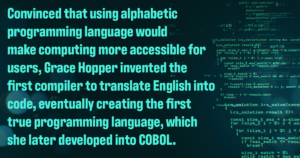
Before Grace Hopper’s groundbreaking work, computers dealt in arithmetic programming only. In 1952, she published her first paper on compilers, which translate alphabetic language into various types of code. But her employer, where she worked on UNIVAC, didn’t believe alphabetic codes and compilers would work. It took three years to convince them to allow her to do the work.
In 1954, Hopper became Remington Rand’s first director of automatic programming and created the first compiler-based programming language, which evolved in 1959, when Hopper collaborated with IBM and at a conference, into COBOL, which is still the predominant programming language in business, government, finance, and other fields.
Hopper began her career in the US Navy during WWII. She required a special exemption to enlist because she was too small for Navy standards. But her work in computing, and her status at retirement as one of the only women Admirals in the Navy, loom large long after her death in 1992.




